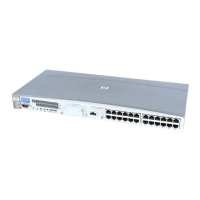• Disk group of the source volume is not changed after instant recovery.
• Another restore from the same backup is possible.
Disadvantages
• Restore is not as fast as with the "switch of disks" method.
• Physical location of the application production data changes.
To perform this type of restore, select the Copy replica data to the source location
option and leave selected the Retain source for forensics option in the Data Protector
GUI.
Copy of replica data with the source volume not retained
With this method, the source volumes are directly overwritten by the replica by
copying data from the target volumes back to the source volumes. The old source
volumes are not retained and if the restore session fails after the copy process has
already started, the original application data residing on the source volumes is lost.
If you try to abort the session at this point, the abort operation is rejected and the
session continues.
You can select to retain the replica and thus enable to perform another restore from
this backup.
Advantages
• Disk group of the source volume is not changed after instant recovery.
• Physical location of the application production data remains the same.
• Another restore from the same backup is possible.
Disadvantages
• Restore is not as fast as with the "switch of disks" method.
• The original source volumes are lost during restore.
To perform this type of restore, select the Copy replica data to the source location
option and clear the Retain source for forensics option in the Data Protector GUI.
HP StorageWorks EVA considerations
• If you restore using HP StorageWorks EVA, before instant recovery, it is
recommended to check if the SMI-S CIMOMs were configured properly in the
Data Protector cell by running the omnidbsmis -ompasswd -check
[HostName] command.
Zero downtime backup integration guide 395

